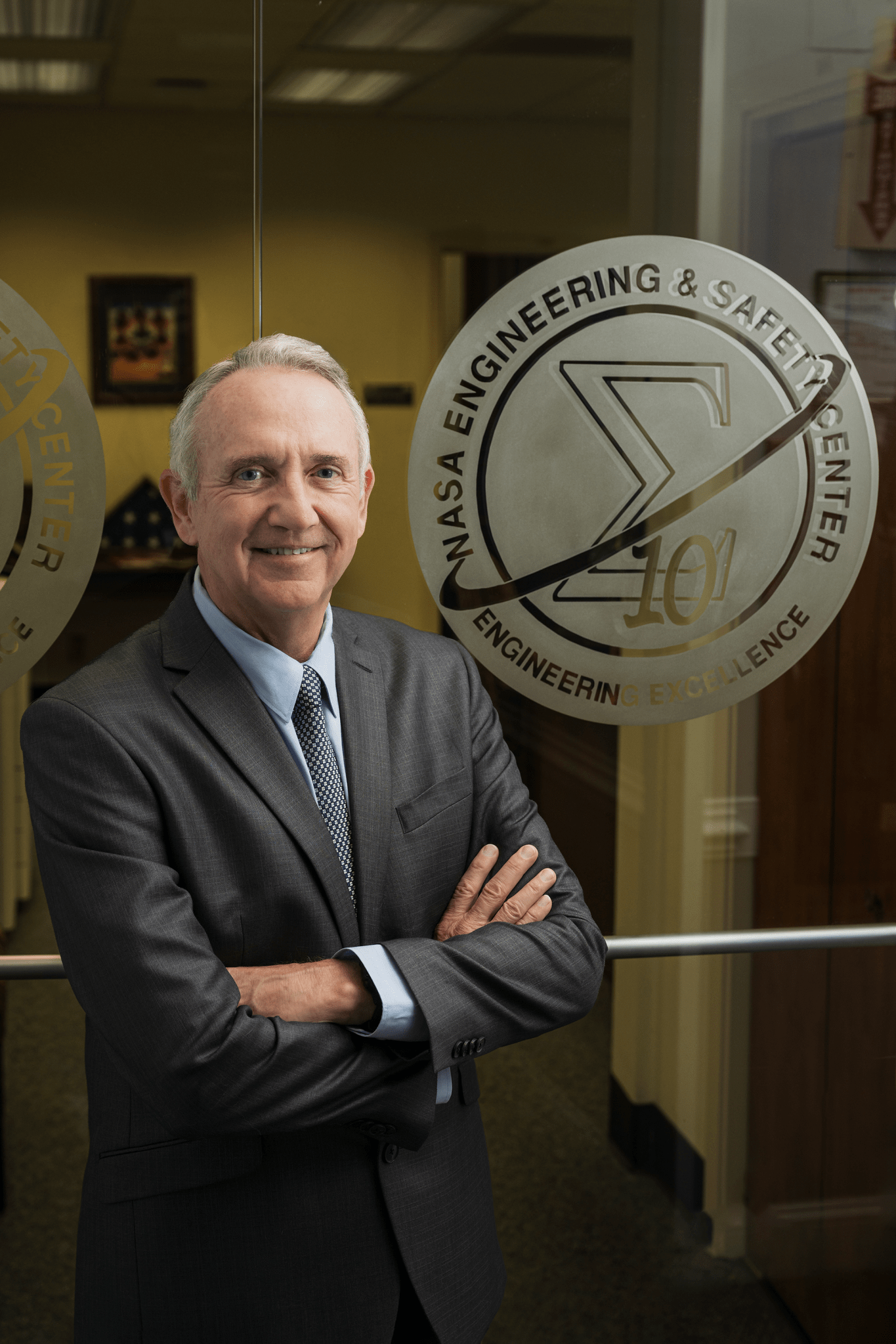Interview with NESC Director, Tim Wilson
Upon reaching its 20th year of operations at NASA in 2023, the NESC is busier than it has ever been. With a portfolio of more than 160 in-progress requests from Agency programs, NESC Director Tim Wilson spends much of his day prioritizing, allocating funds from the organization’s fixed budget to NASA’s most pressing issues. Of late, the NESC has focused on priority-one requests—projects in the flight phase—such as the Artemis missions and those of NASA’s commercial partners, while lower priority requests like discipline-advancing activities have been placed on hold until the next fiscal year. For Mr. Wilson, each day is a new shuffle of requests, funding, and resources.
When he joined the newly formed NESC in 2003, Mr. Wilson could not have predicted the impact the organization would have on Agency operations. “To be honest, I didn’t really think we’d still be here,” he said. “The NESC was an experiment.” Initiated by the results of the Columbia accident investigation, the idea behind it was that NASA programs would benefit from expert, unbiased perspectives on its tough engineering problems. The vision for the organization was straightforward, but the execution was far more challenging than Mr. Wilson expected.
“When we started those first assessments with the CALIPSO satellite and Shuttle, we had to elbow our way to the table to be accepted. We were new, and no one knew who we were or what we were doing. Back then, programs were worried that we might slow them down or cause problems.” Though Agency leadership had given them the green light, it was up to Mr. Wilson and the NESC’s early members to prove they deserved a seat at those tables. “You have to produce some results before folks respect you,” he said. It was hard won, but with each assessment, the NESC gained that respect by bringing ideas and solutions programs could use.
Two decades in, Mr. Wilson is happy to say the NESC is now invited to the table. “That’s part of why demand has grown as much as it has. Our team is respected, and we’re asked to participate. We’ve gone from being an unknown to an organization they reach out to as a trusted partner: someone who can help them be successful, bring expertise or resources they don’t have, or sometimes just bring another perspective to break a logjam and help them get things done. That’s the shift I have seen over the years. It’s been really encouraging to see it.”
The NESC portfolio of work also has shifted from the early, hectic pace of Shuttle assessments where quick, real-time solutions were needed. In the years following the Shuttle’s retirement, the NESC had the luxury of time to invest in longer-term projects like the design and construction of a composite crew module that would be leveraged in the development of Orion and commercial spacecraft. Today, the pace has ramped up again as Artemis, Dragon, and Starliner head to the Moon and ISS.
“These are real-time activities where you have to engage immediately and be able to add value out of the chute. You don’t have time to come up to speed on the system,” Mr. Wilson said. “We learned with Shuttle that it was important to move quickly and be pre-positioned to help.” Over the years the NESC has cultivated good relationships with programs—keeping people plugged in to their day-to-day activities so that when problems arose, they could engage right away.
“The lesson we learned is you need people doing routine work for those programs all along so that they understand the subsystems and hardware and they’re ready to engage when there’s a real-time problem.” It’s been a balancing act to keep close ties yet remain independent, but Mr. Wilson said the NESC has found an equilibrium. Independent yet parallel modeling and simulation (M&S) is a good example of finding that balance, he said. “We build our own M&S tools in parallel with the programs’ tools to give them a second set of eyes to a problem.” Since 2012, for example, NESC-built M&S trajectory tools have help mitigate risks for Artemis missions’ ascent to orbit, and entry, descent, and landing simulations for CCP provider vehicles.
With capped budgets, the NESC must adjust its scope continually to keep up with the increasing tempo of space exploration. For now, that means focusing on what is most critical and has the highest payback. “We’ll continue to focus on the heavy hitters, the programs that are flying and have a critical immediate need. There are a lot of those, and the pace is ramping up.”
As for the future, Mr. Wilson said, “I have not seen very many Agency initiatives persist the way the NESC has, so I’m thrilled that we have met the needs that we were placed here to meet and that we continue to deliver value, because I think that’s what has kept us rolling and growing over all of this time.”





























